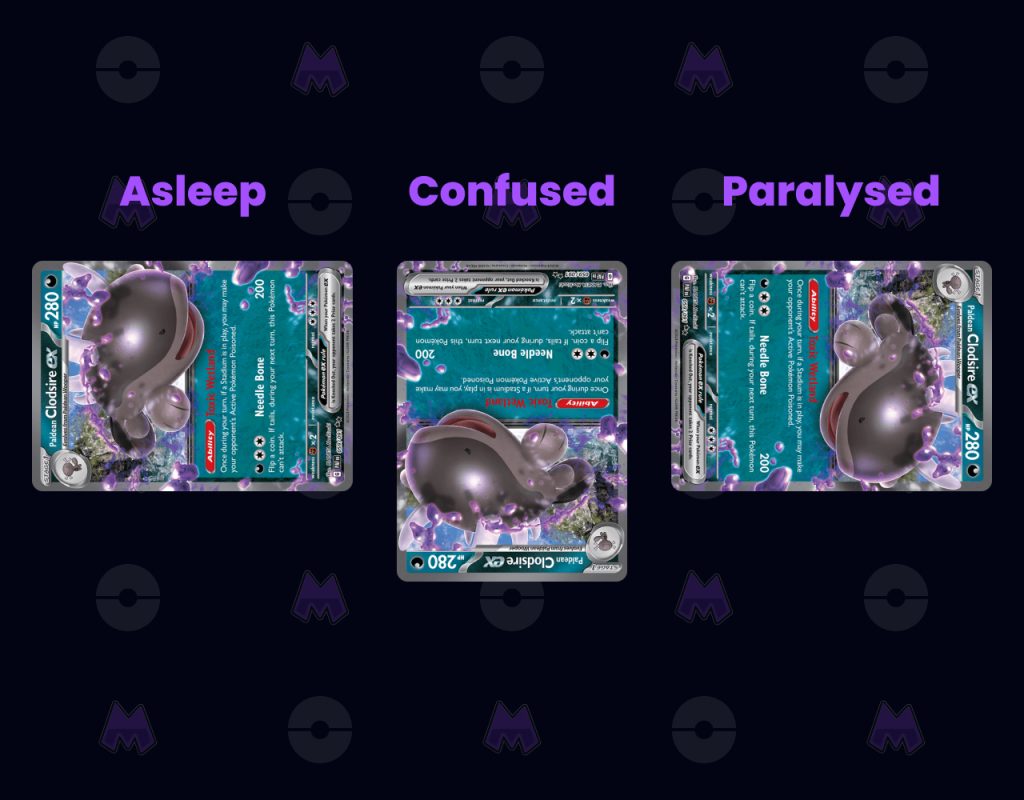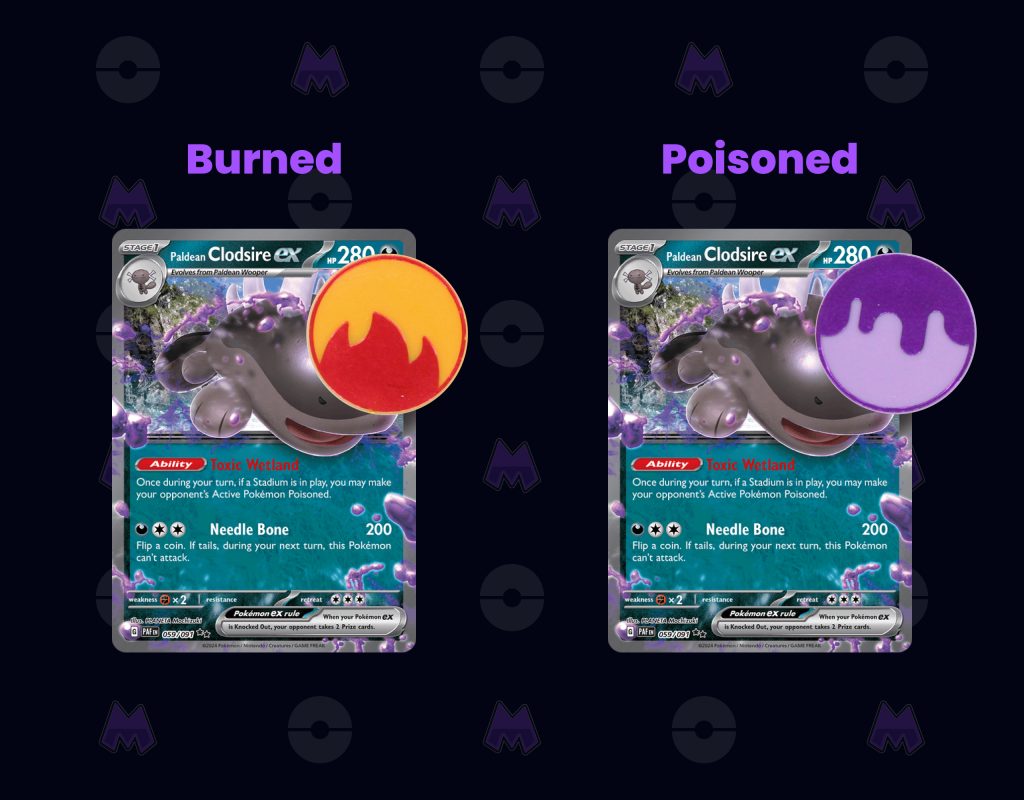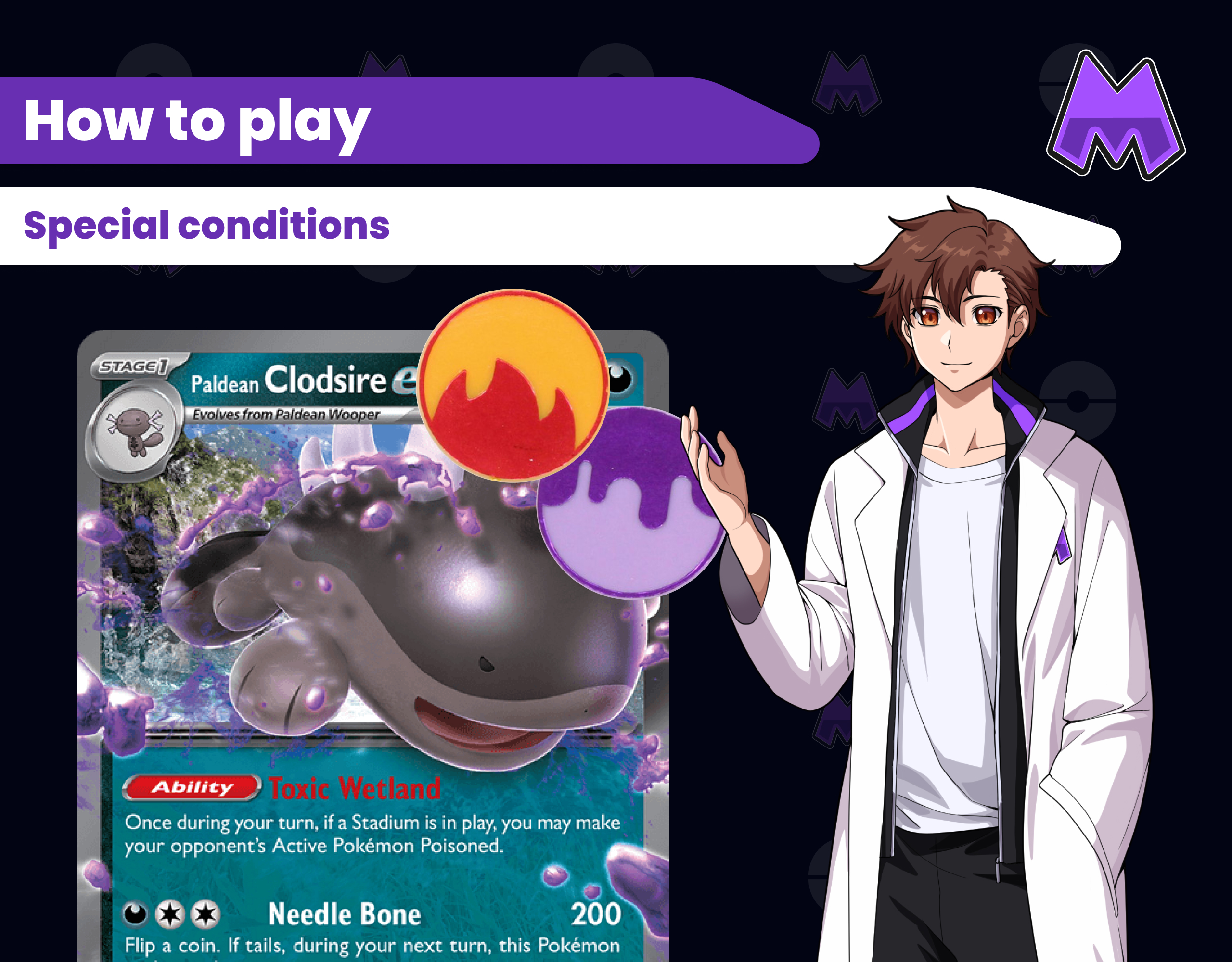The Pokémon TCG features special conditions that can shake up your battles in exciting ways. These conditions exclusively impact active Pokémon, leaving those on the bench untouched. Picture this: your Pokémon might find themselves hindered in attacking or retreating, or they might even face damage during the check-up phase of a turn.
Understanding and mastering these conditions is all part of the adventure. That’s why we’re here to guide you through it all. Keep reading to discover the ins and outs of applying these conditions correctly, including the art of displaying your cards when under their influence. Get ready to level up your TCG skills.

Asleep
When your active Pokémon falls asleep, simply turn its card on its side anti-clockwise. While it’s asleep, it’s unable to attack or retreat. Need a quick fix? Consider using a Trainer card like Switch to shuffle it out of the active position and wake it up.
During the Pokémon checkup, flip a coin. If it lands heads, your Pokémon wakes up. If tails, it remains asleep.
Confused
Got a confused Pokémon on your hands? Simply turn its active card upside down to signal its state. When it comes time to attack, flip a coin. If it lands heads, the attack proceeds as usual. But if it’s tails, the attack fizzles out, dealing no damage or effects. Additionally, place three damage counters on the attacking Pokémon.
Paralysed
When your Pokémon becomes paralyzed, simply turn its card on its side clockwise to indicate its condition. While paralyzed, your Pokémon is unable to attack or retreat. But fear not! Trainer cards can come to the rescue.
Unlike other conditions, there’s no need for coin flips during the checkup phase. Instead, a paralyzed Pokémon recovers at the end of its owner’s next turn. Keep in mind, if your opponent paralyzes your Pokémon, it remains paralyzed only throughout your next turn.

Burned
When your Pokémon gets burned, it’s important to mark the condition with a burn marker. During the checkup phase, the affected Pokémon takes an additional hit of two damage counters. Then comes the pivotal moment: flip a coin. If it lands heads, the burn marker is removed. If tails, the burn remains.
Poisoned
When your active Pokémon is poisoned, mark the condition with a poison marker. During the checkup phase, add one damage counter. Remember, you can’t have more than one poison marker at a time.
Need a strategy boost? Keep an eye out for cards and Pokémon abilities that can amplify the poison damage during checkup.
Multiple special conditions at once
When a Pokémon is affected by sleep, confusion, or paralysis, it’s turned on its side or upside down. However, only the most recently applied condition takes effect. On the other hand, poison and burn markers are separate, allowing both to be active simultaneously. This means a Pokémon can be burned, poisoned, and either paralyzed, confused, or asleep, with a maximum of three special conditions at once.
Keep in mind that other effects, such as Pokémon abilities, may occur during the checkup phase. As discussed in our “Actions during a turn” article in the how-to-play series, special conditions must be applied together.
Remove special conditions
As we’ve discussed, special conditions exclusively impact the active Pokémon. However, shifting to the bench acts as a quick remedy, instantly healing any special conditions. But there’s another nifty trick up your sleeve: evolving a Pokémon also wipes away any lingering special conditions, granting a fresh start to your evolved companion.
Team Maniax, shuffling out – see you next time!


Leave a Reply